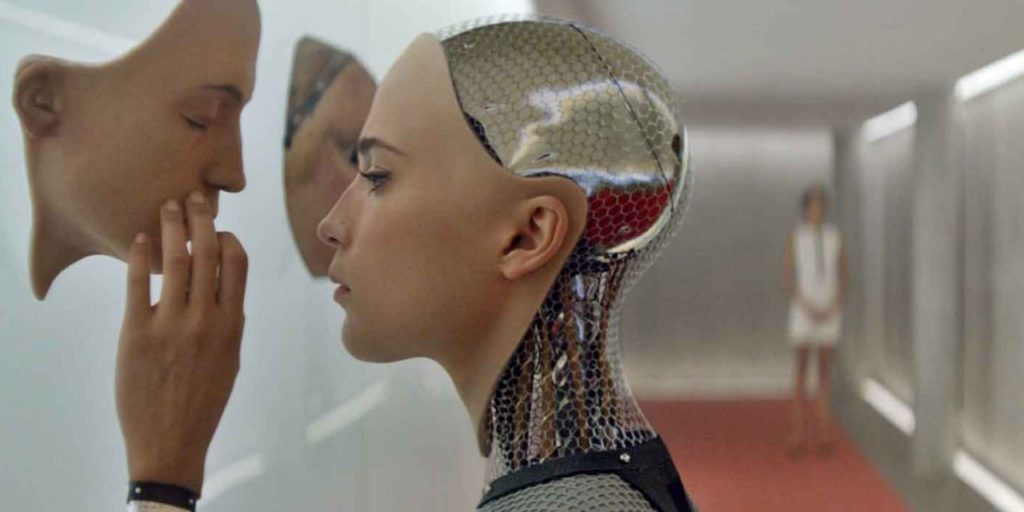
How People Analytics can help your organisation take ‘First Advantage’ and Thrive in the disruptive times ahead
A wave of transformation is about to hit Ireland in the next 5 -15 years… A.I. is not coming it’s already here!
Recently, I was invited to give a lecture to students that are seeking jobs in the manufacturing sector, my job was to uplift, inspire and give hope to these students, I also had to tell them the truth, which is; that is that their career will have a life span of approximately ten years.
That is because it is estimated by 2030, the majority of their jobs will be replaced by automation.
Worldwide, the estimated figure for the number of jobs automation will replace in the manufacturing sector is twenty million.
According to an analysis by Oxford Economics People, they are also unlikely to find ‘Comparable roles’ as similar jobs in the services sector will also have been squeezed by automation.
Have you noticed how few tellers there are in the banks and cashiers in the supermarket?
The acceleration of technology and A.I. is like the sea, it will creep in slowly, you won’t notice it and then, one day you, your family and your co-workers will be surrounded by it.
When A.I. becomes ‘normalised’ in our workplace and communities, ‘ordinary’ jobs will disappear overnight, this is because the processing speed of A.I. is far superior to the human brain. Therefore, work can get done quicker and cheaper.
A.I.’s progression is not linear it’s exponential. Regardless of the debate as to the exact number of jobs A.I. will replace jobs or not, what it does mean is that most organisations will be facing… talent re-deployment.
There will come a time in the not too distant future when you will have to decide: Are you going sink or learn to surf the waves?
People Analytics will no longer be a ‘nice to have’, it will be a ‘must-have’.
Change can happen super fast, therefore organisations will need to understand how to pivot, restructure and re-deploy people at speed (be agile and adapt to change) and this will be key to not only survive, but to thrive in the disruptive times ahead.
Leaderships’ ability to navigate and translate that disruption into ‘a positive’ for the teams they lead will be vital. As predictive analytics, in particular, will be seen by leadership as a way to predict future outcomes, gain control, execute at speed and make the right people choices in a fast-changing world, the organisation, in order to attract, select, engage and retain, the brightest and the best.
It’s not necessarily the ‘fittest’ of the species that will survive, it’s the one that is most ‘adaptive to change’.
Disruption will push organisations to become more attuned to the needs of the employee and for many, this will mean a shift to new paradigms and different models of working.
EIQ and the ‘Self-Aware’ Organisation will take Centre Stage. As the drive and need for specialist roles increases, the hunt and retention of talented individuals becomes more competitive.
HR will increasingly be focused on developing organisational culture and creating a ‘people experience’. Foundational to building ‘a positive people experience’ is to understand the humans in your organisation…
“Everybody is a genius. But if you judge a fish by its ability to climb a tree, it will live its whole life believing it is stupid.”
Albert Einstein.
In the same way as a doctor runs tests to understand an individual’s biological DNA, advances in behavioral science now enable us to use diagnostics to uncover the psychological DNA of our employees.
This makes it much easier to understand the unique design, passions and skillsets that lie in our employees and then create jobs that are designed to match that blueprint.
This recognition that we are all pieces in a jigsaw puzzle, we are all different and therefore have been given a unique design with a unique set of skills, competencies and purpose will take centre stage.
Here’s why People Analytics will be your best friend in the times ahead:
- Data-driven decisions will enable interventions to be put in place quickly, increase leaders ‘self-awareness’, support and elevate them, to improve empathy, ability to collaborate, manage their teams better as well as optimise their cognitive ability to think through complex problems and lead through complexity.
- People analytics provides a way to define, quantify and measure softer skills, in particular those that drive EIQ, in the organisation. Equally as important is the ability to predict and minimise behavioural traits that lower EIQ and have the potential to de-rail a team, department or organisation, if not kept in check!
- Greater Talent Mobility: Having a broader overview of your workforce, their skills and ‘potential’ will enable you to plan better. You will be able to see who are the ‘right people’ which can be mobilised into the ‘right positions’, at the ‘right time’, either externally through a recruitment campaign or internally via an internal ‘grow your own’ program.
- Builds Resilience: Organisations are operating against a backdrop of VUCA (Volatility, Uncertainty, Complexity and Ambiguity). Having visibility as to who has the right skills in your organisation, will enable the organisation to pivot and adjust quicker if/when disruption hits. If you don’t understand the skills of your employees you will not be able to respond quickly and may end up relying on ‘knee jerk’ responses which will slow progress.
- Leverages the performance of your Human Capital. What got us here, won’t get us there’. Having visibility as to where the skills gaps lie in your organisation will enable you to identify training and development needs and better align employees with jobs they are more suitable for, i.e. ‘talent re-deployment. Better skilled and knowledgeable employees will contribute to higher performance.
Change is coming, this is a given, the critical question now is: Are you going to be Proactive or Re-active?
The world is changing at a rapid rate and this presents a double edge sword for business. You can either take ‘first advantage’ of the opportunities that are on the horizon, or you can wake up one day and realize that not only your job, but also your industry as you know it, no longer exists.
The question for organisations now is not whether or not to introduce people analytics but when and how do we embed the structures, systems and mind-set in our companies to use data on our people in a way that values our humanity while simultaneously create the right eco-system and culture for organisations to ‘thrive’ in the disruptive times ahead.
I believe it’s now time when it’s not enough to know ‘why’, it’s time to know ‘how’…if the spirit moves you…discover how people analytics technologies and methods can support you on your transformation journey, connect with us here at: sharon.miller@human-bydesign.com.

